Ten Weird, Iconic Photos That Capture the Messy Essence of Glastonbury
June 27, 2024Every June, hundreds of thousands of people pile into cars, buses, trains, and planes to make the pilgrimage to Glastonbury festival. For more than 50 years, it’s been a week-long insanity farm for music lovers of every tribe. A place where you can drink warm lager and dab dodgy MDMA, then lose yourself in some sort of murky hobbit den filled with sculptures made from car exhausts while a DJ in a top hat plays electro swing.
For the last three decades, photographer Liam Bailey has been there every single year. He works with only one rule in mind: that the camera remains focused on the people who attend, rather than the bands onstage.
The result, 32 years on, is an astonishing record of how Glastonbury, hedonism, and hedonists have changed since his first visit in 1992.
“At my first Glastonbury, the first thing I saw was seven or eight different tribes, dancing and intermingling in the fields: indies, grungers, skins, Rastas: everybody was in one place,” he recalls.
“I couldn’t believe that existed in Britain at the time, because we were right on the edge of marginalisation for so many people—under a pretty austere Thatcherite model, which tried to exclude anyone who wasn’t of their class.”
When it comes to what’s changed over the years, Bailey cites the big security fence going up, the BBC coverage, and the emergence of the backstage celebrity “luvvie” culture as three major markers. But these changes haven’t put him off. “I just can’t not go,” he says. “It’s like having a yearly gong bath, for me.”
After three decades of taking photos, Bailey has compiled them into a new book. Glastonbury: The Festival and Its People came out earlier this month on ACC Art Books. We talked to him about it.
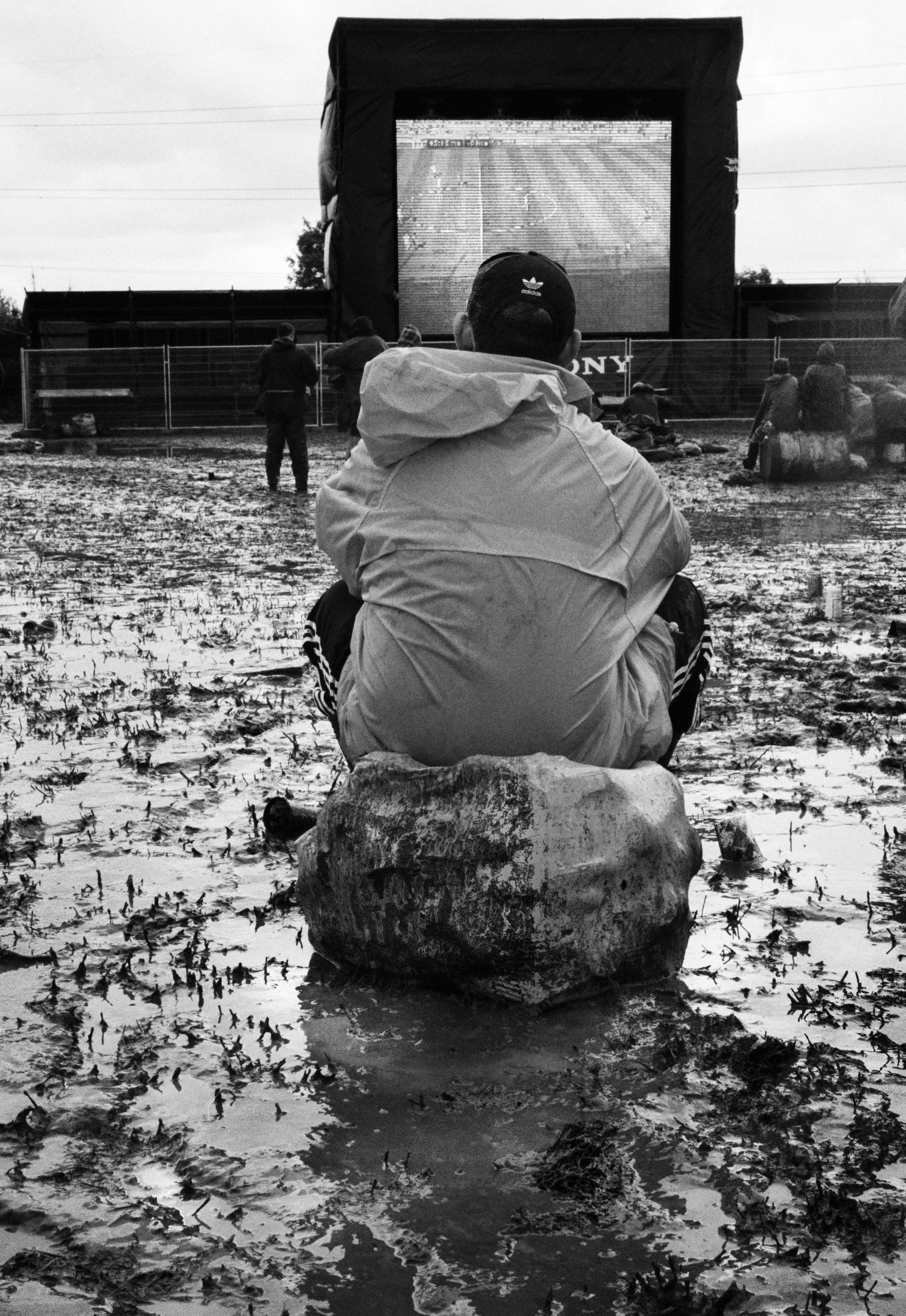
“This is one of my favourites. I think it was the 1998 World Cup. It was a proper shower, as you can see, and we were watching the USA match in the daytime. [Editor’s note: after some extensive cross-referencing of dates and times, this is more likely to be the Mexico-Ireland game that took place at the 1994 World Cup held in the USA.] He’s like: I will enjoy my holiday. I love that. It’s like Withnail in a field—I’ll do what I have to do, because I’m British.”
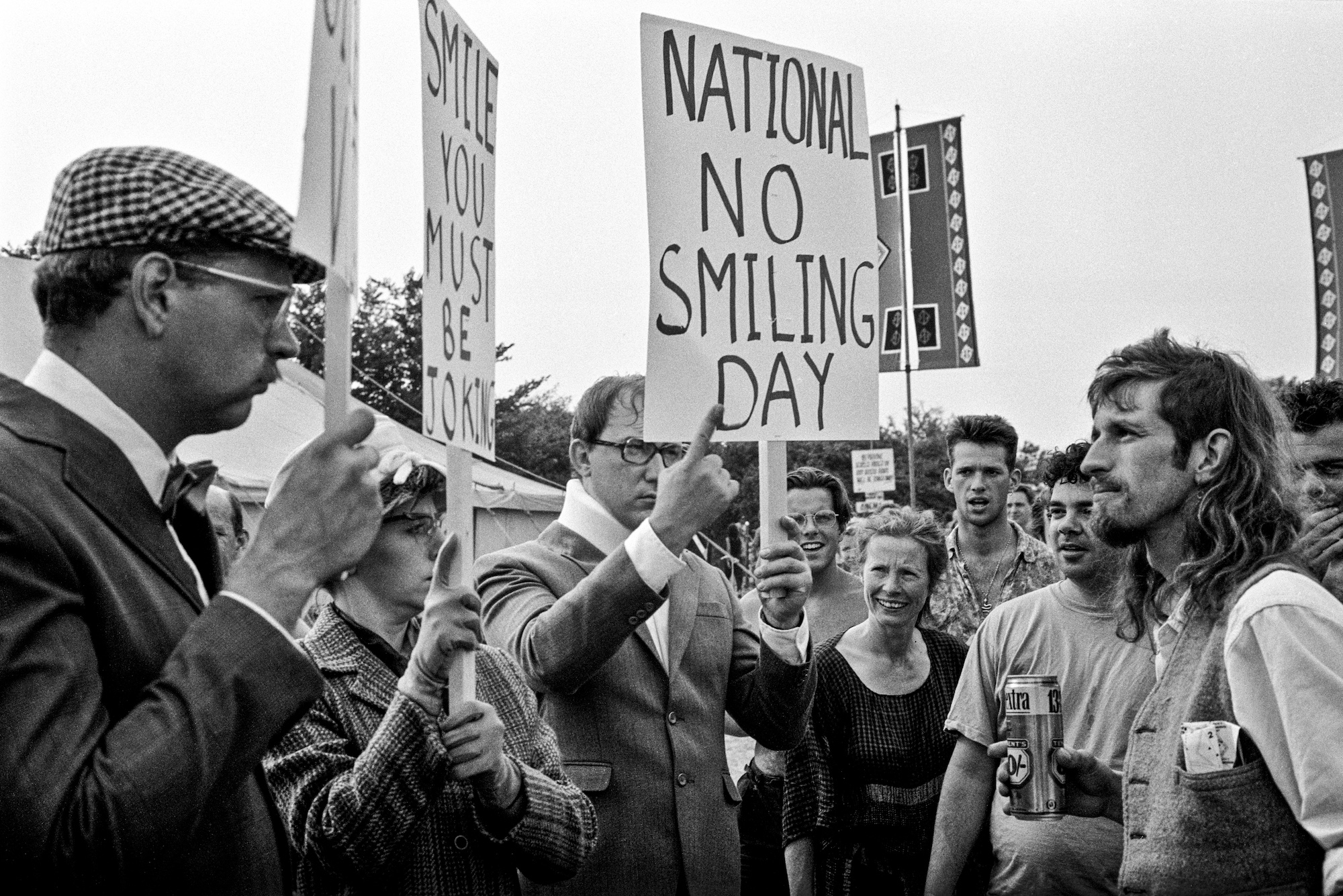
“Glastonbury has all these performers walking around, kind of like street performers. This was close to the time that the Tories got re-elected and people there seemed to be in a bad way. These had gotten into this Mexican standoff of who’s going to laugh first. I didn’t get that this was meant to be funny—it felt like, oh, is this where we’re at now?”
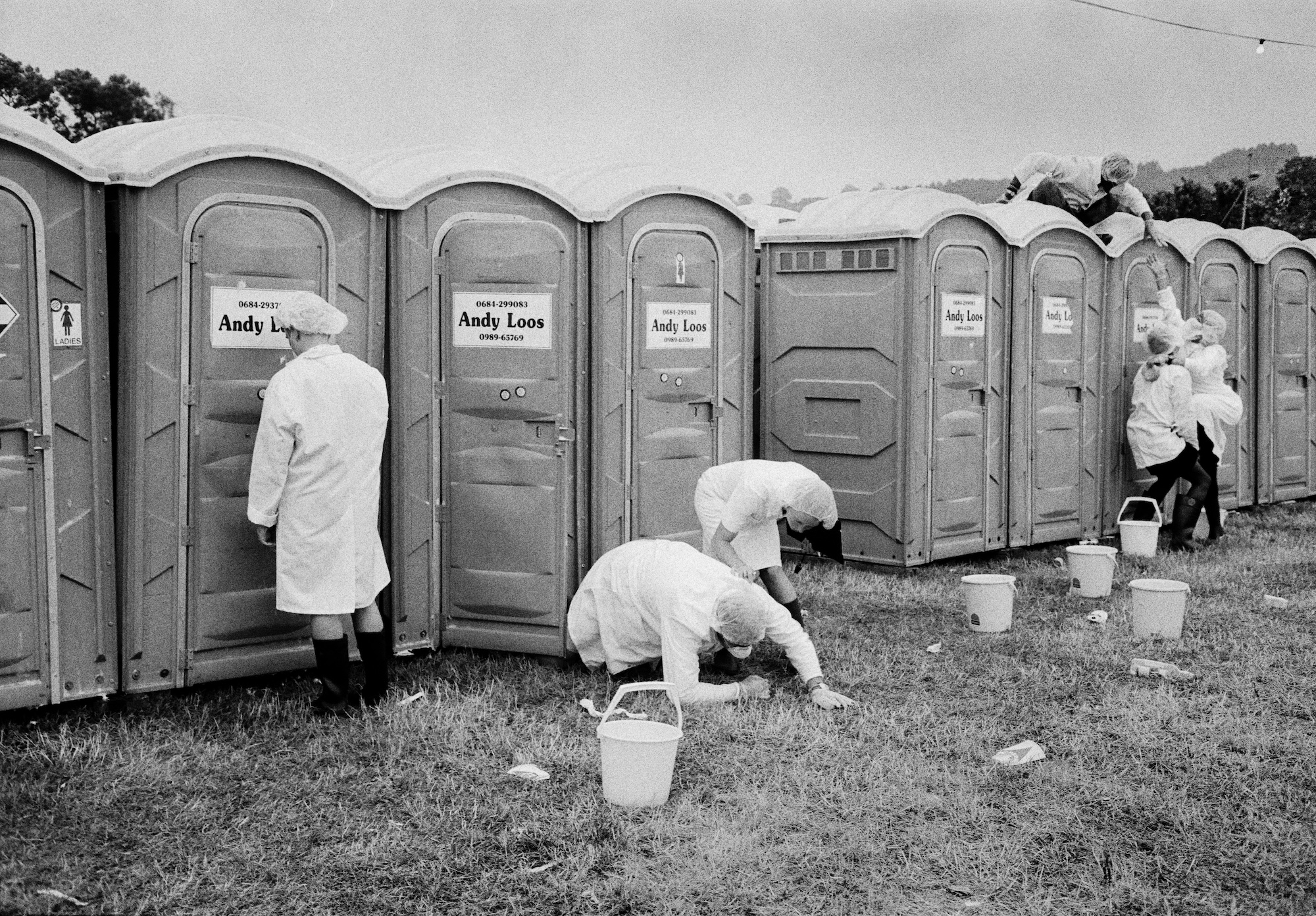
“I’m not too sure what’s going on here. I have a feeling it might be performance art? But also, things do happen; people have gotten stuck in loos, or things have blown up. I remember it was taped off. Maybe it was taped off because it was the boundary of a theatre space or because something was going on—I couldn’t tell you. I like the composition of this one, particularly; it draws your eyes from the right to the left to the right again.”
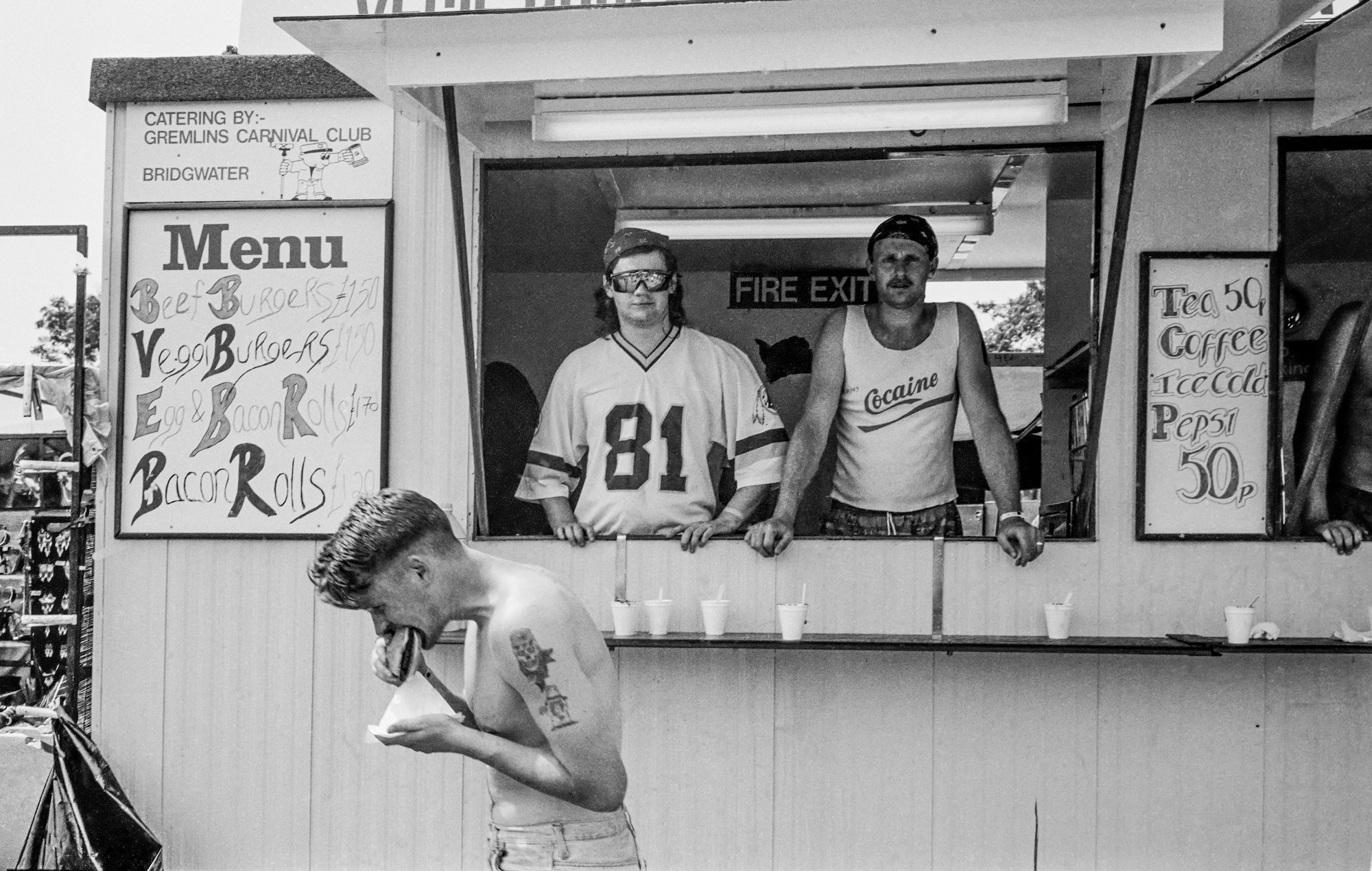
“[Referring to the vendor on the right’s shirt] Well, look, drugs were a big part of the culture. Maybe some of these storeholders were accidentally telling you what they were selling? I couldn’t say that for sure. What this photo shows, though, is an unprepossessing food stall vibe. The culture of food hadn’t really grown yet. You either got a pie, a burger, or some chips.”
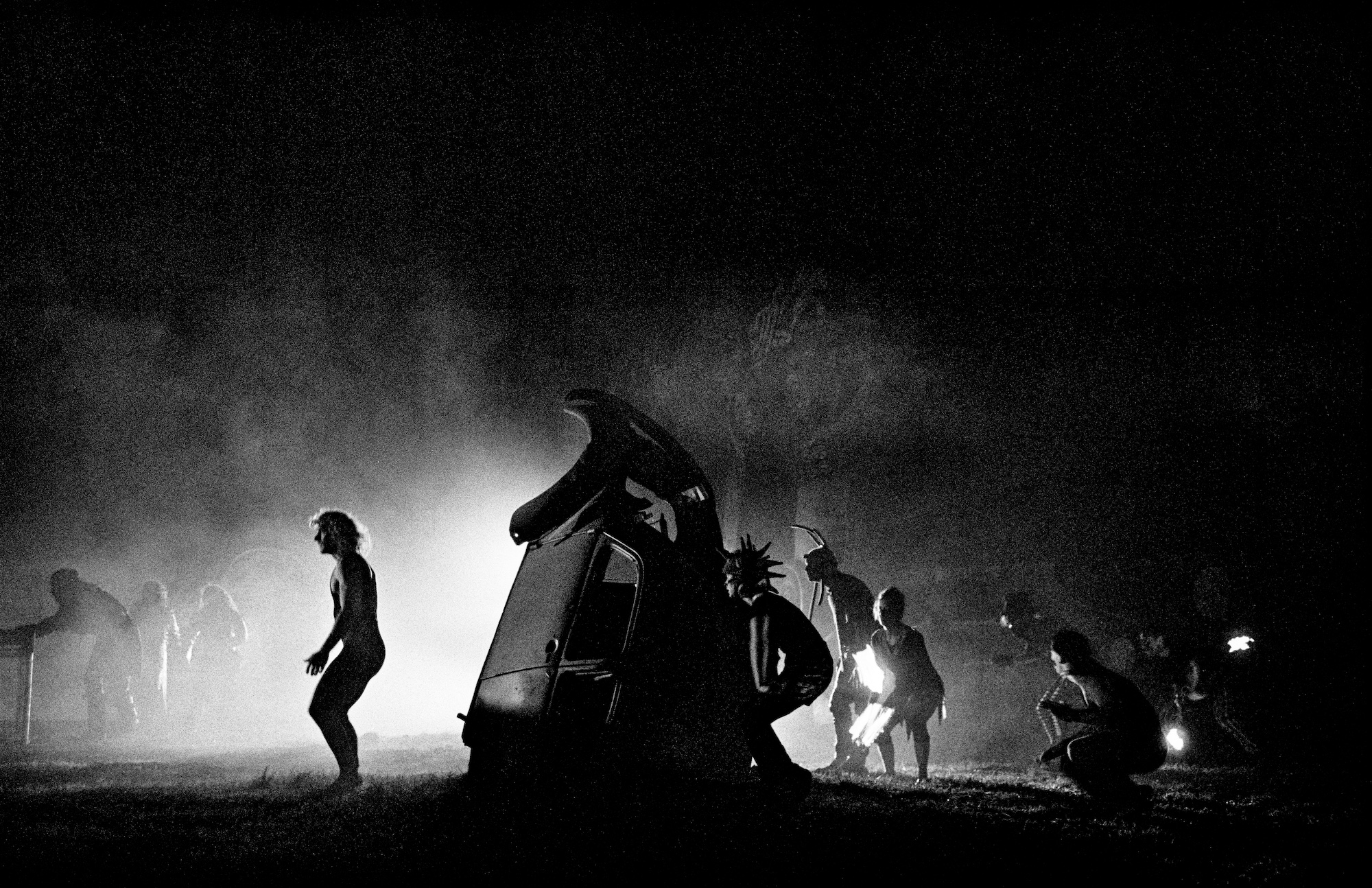
“Carhenge was a Stonehenge of upturned cars, which were buried halfway into the ground. At nighttime these characters—creatures and theatrical people—emerged to protect it. You’d walk past and think, ‘What the fuck are they doing?’ That’s where this shot came from. There was a performance where some motorbikes came in. It was a bit Brighton Rock, there was some fighting between the cars and the bikes. It was really quite fun.”
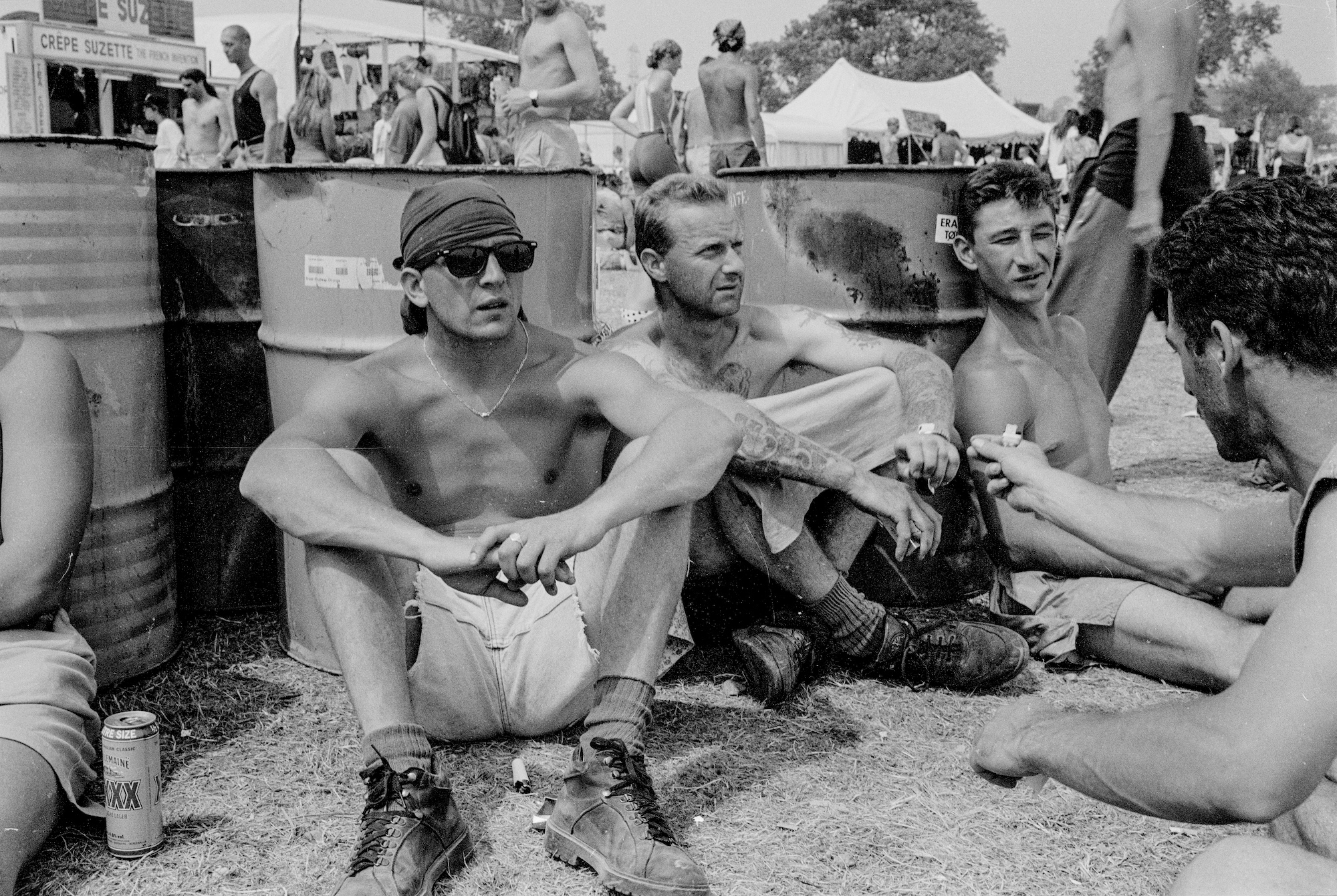
“I’ve been a big fan of Don McCullin over the years. I know this is going to sound really crass because he covers massive war issues, but this photo really reminds me of GIs, or the guys hanging out in Vietnam before or after a raid. It has that military sense. That idea of: Fuck it, I’m just going to get off my tits. The napalm boys. And there’s something interesting about the seriousness of the comedown. People got really quite high back then, so during the comedown you’d just be with your mates and bring yourself down with a bit of weed or something. It’s like young men coming back from war.”
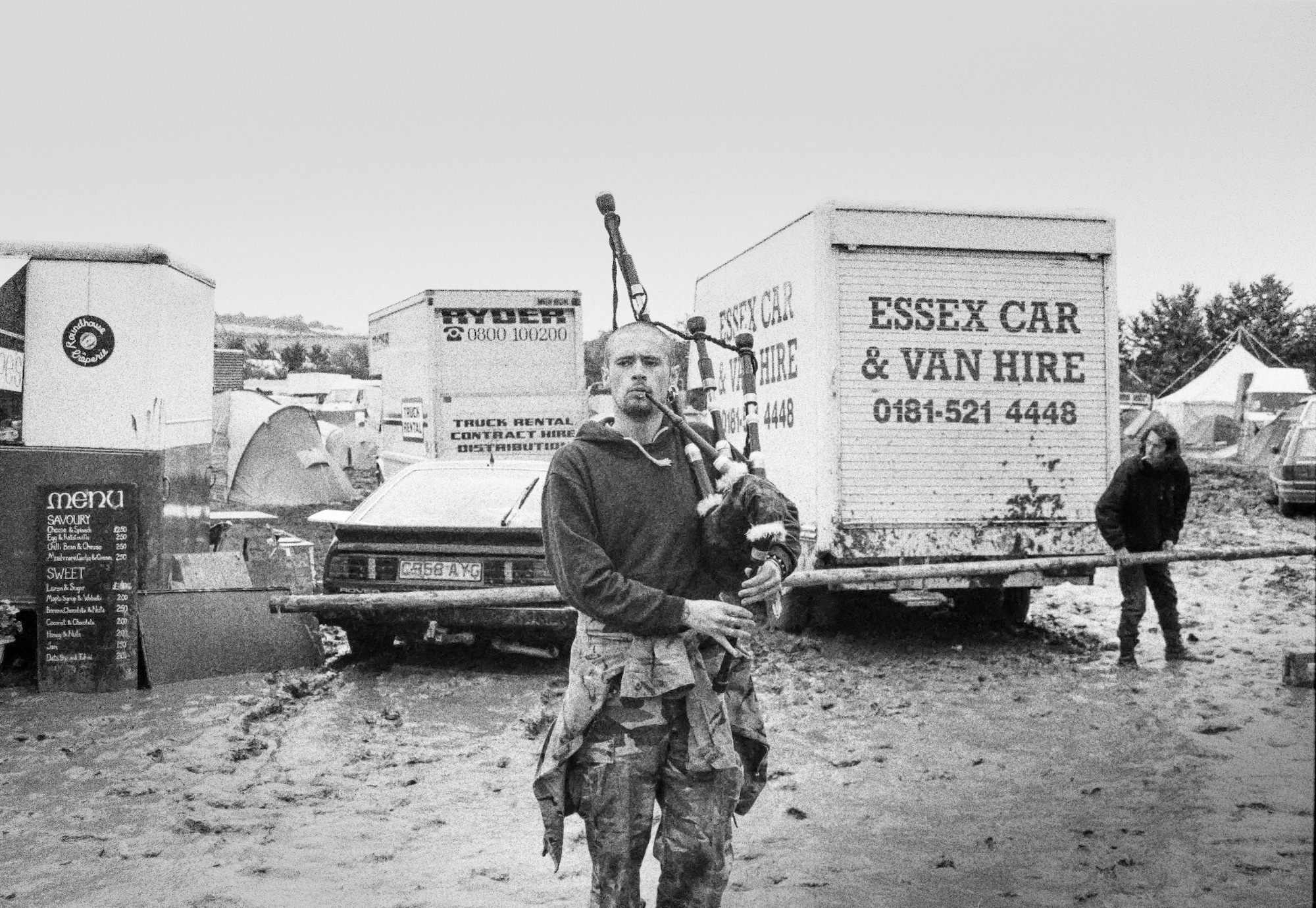
“Man alive! Because of the weather it was just not possible to do anything, really, other than just exist. This man had come with his pipes and he wanted to make us feel different as we tried to get up that hill. He was just a punter. It was like: I’m going to get you there, lads! I think this is just the Scottish spirit.”
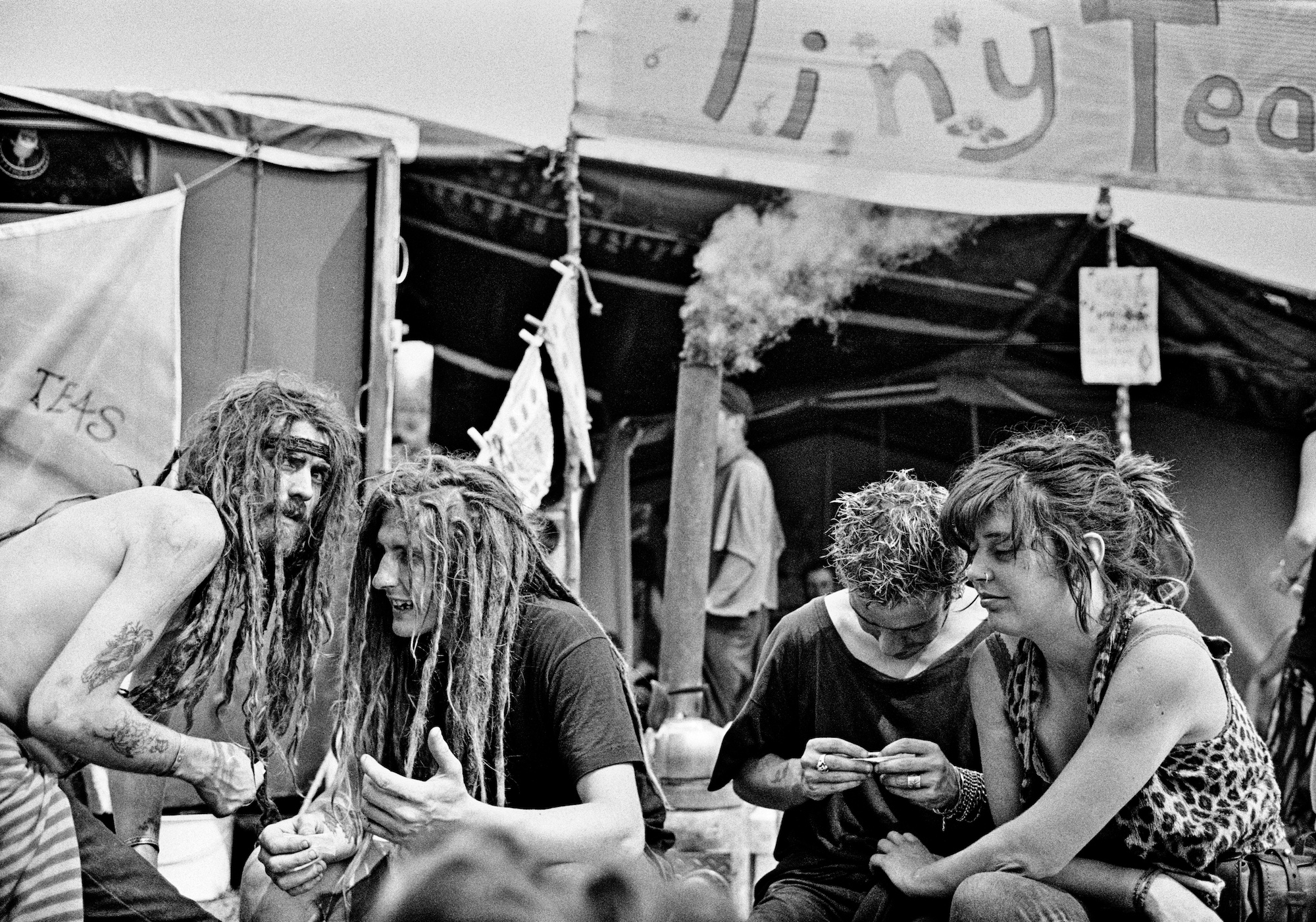
“I think this style was a precursor to the American West Coast scene. This was protest punk—the West Midlands ska scene meeting the punk scene in a white Rastafari way. They were always quite feral and suspicious; anarchists, effectively. Michael Eavis let travelers stay onsite for three months, so they could create a summer base. He respected them and their rights.
“I still see these types of people at the festival but it’s largely amongst the post-work generation. I see lots of people in their fifties and sixties who, because of the property ladder and other things, have decided to sell up and live simply. I was at Lost Horizons earlier today—which is a great space at Glastonbury that has a yurt, sauna, and plunge pool—and when you look at the ages of the people who are running it, it looks like an old people’s home. It’s because they’ve decided to opt out of the Daily Mail, normal, running-towards-death existence. So now I see this lifestyle amongst people who can afford it, or are on a state pension, whereas at this time (when the photo was taken) people had no money.”
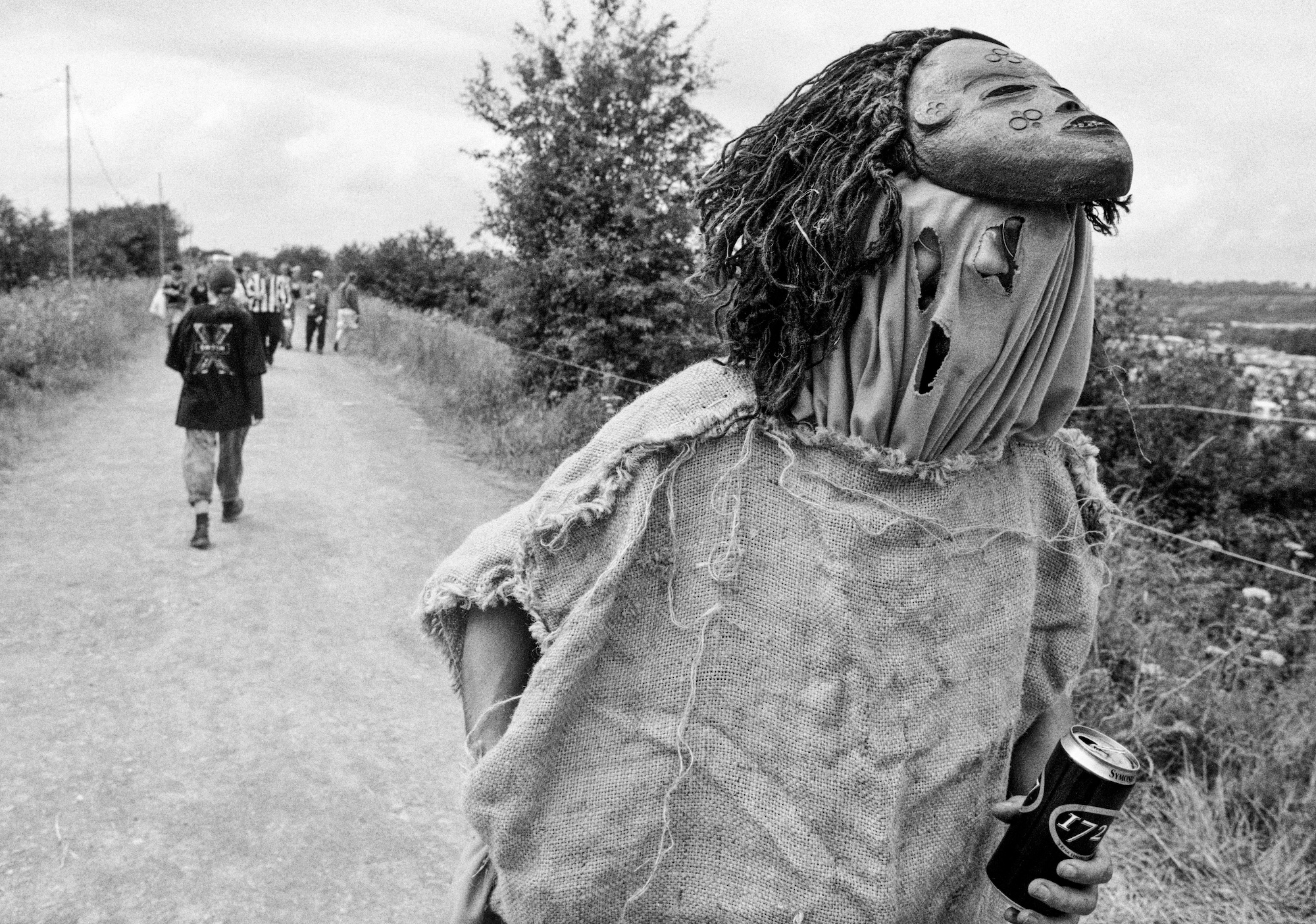
“This particular year there was a lot of worry about surveillance. The eco and environmentalist community was much smaller back then. People like Swampy and others that were trying to stop roads being built. At the time, the police had infiltrated a lot of these green groups and, as we now see from the enquiries, they’d got in so deep that they’d had relationships and children with the protesters. It got really out of hand. I suspect that this guy in the photo was an eco-warrior and just didn’t want to be surveilled, so he was masking up.”
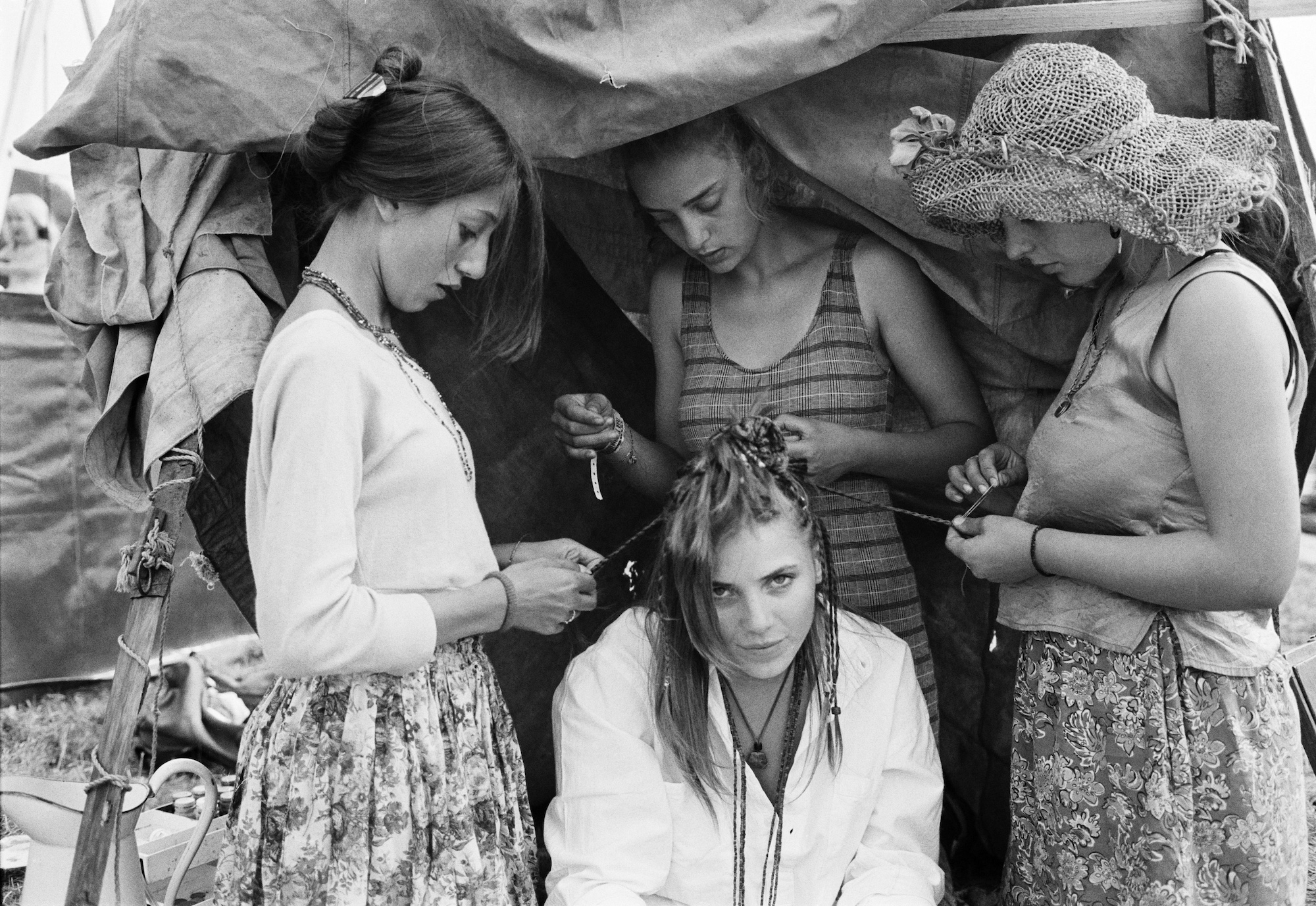
“This was my first understanding of sisterhood, and how women work together in a way that is just so beautiful and supportive. This photo symbolises that support system. This is when I started working in the soft pools of the festival; I wanted to find the nuances, the subtleties. I realised I was a lot more content to understand culture and the people of Glastonbury. I’m not interested in bashing through the barrier with all the other blokes and taking pictures of bands.”
Liam Bailey’s book, Glastonbury: The Festival and Its People, is out now on ACC Art Books.
